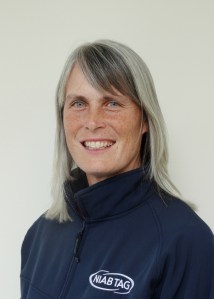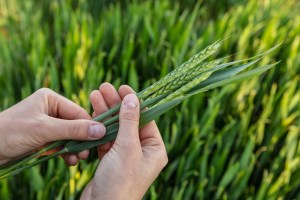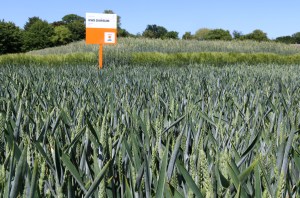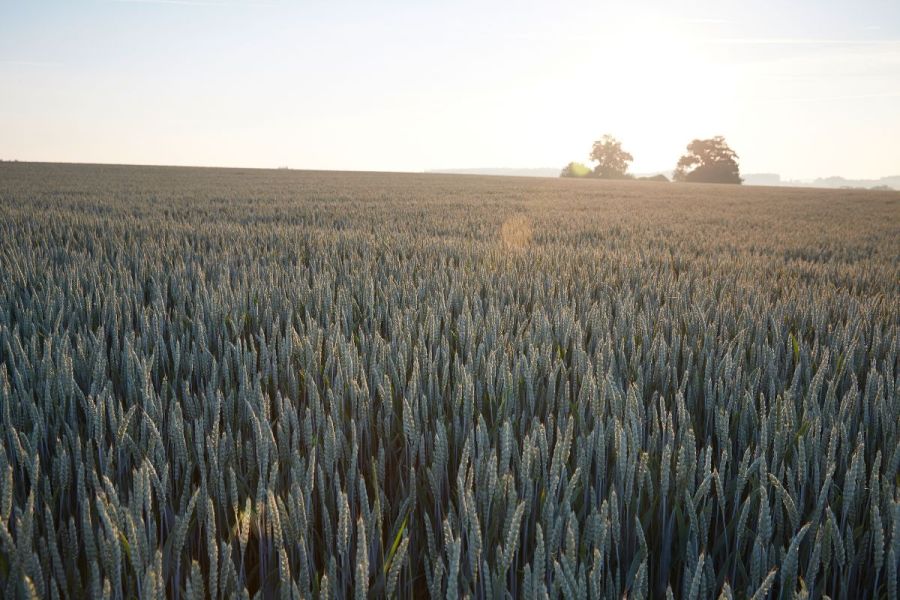With the shift away from solely yield-driven objectives and a move to more strategic approaches to variety selection, are new trends emerging? CPM looks at current drivers behind wheat choices and crop management decisions.
“Profit matters but, ultimately, it’s how you land there.”
By Janine Adamson
In the UK, wheat remains top of the crops, with this season the largest area expected to be harvested since 2016. But at the same time, conversations are changing – it’s no longer a straight discussion about combine-busting yields.
As a result, where should breeders focus their efforts to ensure varieties deliver what’s now required by their customers? NIAB’s Clare Leaman says without doubt it’s disease resistance. “There’s been a noticeable shift in approach. Interest is growing in how characteristics once managed through a can, can be managed through genetics.
“Years ago, you’d be lucky if a variety scored a septoria rating of 6, but now you can have a 9. On the whole, we’re fortunate breeders have upped their game and responded to the changing landscape,” she says.

Interest is growing in how characteristics once managed through a can, can be managed through genetics, says Clare Leaman.
Clare isn’t alone in her perspective – a recent survey conducted by CPM and KWS confirms that although yield remains important, there’s much more behind decision making. Of those taking part in the questionnaire, 78% cited disease resistance as an influential factor in variety choice, followed by agronomic features (64%), end use (50%) and specific weight (41%).
“Profit matters but, ultimately, it’s how you land there. If genetics can take care of that journey, that’s the most efficient approach,” says Clare.
With this year’s wet spring and increased septoria sporulation, varietal disease resistance packages will be under additional pressure, which KWS’ Kirsty Richards says justifies the requirement further. “As breeders, we’re having to recalibrate what we think are the most desirable features in wheats. The results of this survey, although unsurprising, are reassuring.
“It’s tough out there this season. We’d be foolish to ignore the importance of yield, but evidently growers do value a robust all-round offering.”
In terms of end market, 65% of those surveyed are growing for feed purposes, with 24% aiming for the milling market and the rest growing for seed or specialist contracts. Whereas in the past milling premiums have made additional nitrogen inputs worthwhile, unpredictable fertiliser costs have since put this into question.
Clare believes there’s a current trade-off across the wheat groups. “To meet milling standards, it’s mostly Group 1 varieties, with two of the main choices unfortunately having a real issue with yellow rust. This was demonstrated last year, when the struggle was keeping those crops clean.
“In contrast, Group 2 wheat varieties have good yellow rust resistance and can make milling quality, but you have to push them hard in terms of costly applied nitrogen,” she says.
Clare says the dream solution would be the launch of a new Group 1 variety, offering both milling quality and excellent all-round disease resistance. In the meantime, she believes Group 2 KWS Extase is a viable half-way house.

According to the survey, disease resistance and agronomic features are key drivers behind wheat variety selection.
Kirsty agrees with the sentiment. “KWS always advises growers secure contracts before applying nitrogen speculatively, but we believe Extase is the complete package which can also meet milling specifications at 12.5% protein content.
“It’s the highest yielding breadmaking variety on the AHDB Recommended List (RL), while standing firm in offering the highest untreated yield. By its nature, it’s ticking the boxes of yield, disease resistance and a degree of end market flexibility.”
With the unpredictability of input prices, the survey asked participants to divulge how they approach nitrogen and whether this changes during the season. Of those aiming for milling quality, 77% start and remain with a milling protocol throughout the crop’s lifecycle. Beyond this, 14% start with a feed protocol, then switch to milling in the spring.
Clare says this is likely because the majority of milling wheat growers have become specialist in their trade and are less likely to deviate away from what they know works. As for Group 2 wheat growers, she believes most manage the crop as a feed variety and stick with that approach.
“They might hope for a milling premium, but it would very much be a bonus rather than a given,” she says. “With current volatilities across inputs and environmental conditions, it’s a case of risk management. Most will want a balance sheet that reflects their original budget.”
Despite the wider unknowns, AHDB’s Millie Askew says this season’s milling premium may prove too tempting. “Last year, protein percentage wasn’t met. This was likely to be a result of the dry weather, meaning crops didn’t take up late applications of nitrogen, so growers could be cautious.
“However this year, the milling premium is huge, combined with a considerable drop in the price of wheat. Some growers may decide it’s worth the risk overall and we’re seeing that in some cases. Conversely, it wouldn’t surprise me if nitrogen has been very carefully managed this season, making it trickier to push those Group 2 varieties. We won’t truly know until we see the harvest data,” says Millie.
For Kirsty, the opportunity of a high premium compliments the flexible benefits of KWS’s Dynamic Wheat range. “The survey suggests growers are much more strategic in their approach to crop management, whereas years ago they might have hedged their bets on the end market depending on how the season progressed.
“KWS has varieties with built-in flexibility to allow a shift in approach. Although the survey indicates growers are less likely to do that, the option is there for when the premium makes it worthwhile. I believe overall it’s a positive story and demonstrates an improved awareness of current markets, robust planning and strategy.”
According to Essex farmer Chris Haylock, devising a strong strategy is something growers can’t afford to not do. He shifted away from Group 1 varieties and now selects a range of wheats across the other Groups, which he says is to reduce risk.
“We decide how we’ll manage each variety before we buy the seed. In terms of nitrogen protocol, we treat all of our crops as feed wheats and if they make the grade for milling, that’s great. If not, it hasn’t cost us any extra,” he says.
It’s the price of nitrogen that’s made Group 1s unviable, comments Chris, particularly if the crop doesn’t make the required protein percentage. He’s also recently shaken up his variety choices, moving away from Extase, Gleam and KWS Siskin towards KWS Dawsum.

KWS Dawsum is a hard Group 4 wheat which KWS says offers the ultimate in flexibility, particularly if drilling date is an issue.
With 550ha of wheat in the ground this year, he says the aim is a clean crop which is why he’s giving Dawsum a try for the first time.
“The disease profile was the driver when selecting the variety, along with yield because we’d like to lower our input costs. So far, it’s looking strong even during the catchy spring we’ve just experienced. It’s a candidate for home-saved seed so it has to perform well,” says Chris.
Kirsty agrees that Dawsum should be commended for its disease package and untreated yield (95%) in helping to see through difficult conditions. “Dawsum is a hard Group 4 wheat which offers the ultimate in flexibility, particularly if drilling date is an issue and a wide window is required.
“Importantly, it scores well across the major diseases – 8 for mildew, 8 for yellow rust, 7 for brown rust and a 6.3 for septoria. And with its excellent specific weight package, Dawsum should come into its own if conditions remain dull through to harvest,” says Kirsty.

The survey suggests growers are much more strategic in their approach to crop management, whereas years ago they might have hedged their bets on the end market, says Kirsty Richards.
As profits remain pinched, what does it mean for second wheats which if poorly managed can dent the bottom line? According to the survey, 42% of participants have planted between 0 and 20ha of a second wheat, with a sharp downward curve beyond this.
Clare says this is indicative of recent trends, with the second wheat area being much smaller than in the past. “The days of tight wheat-wheat-oilseed rape rotations are dwindling for a number of reasons. Barley has grown in popularity and there’s an overall desire to widen rotations through diversity of cropping.
“Those growing second wheats will have to be even more selective when it comes to choosing a variety to achieve the absolute most out of that slot.”
Despite the survey findings and Clare’s insight, Chris says he’d rather continue with second wheats at JJ & TH Haylock. “It’s our cash crop, we then use a break of spring oats or beans. For us, OSR is just too risky and we’ve found linseed and peas difficult to combine.
“But we have a clear strategy and are careful with how we approach variety selection and overall crop management.”
As more move away from second wheats, which crops are being planted in its place? The survey confirms Clare’s view that barley remains strong, with 85% of those surveyed giving it a slot in their rotation. This is followed by OSR (63%), beans (27%), sugar beet (26%) and maize (23%). However, the survey also indicated the sheer range of crops being grown this year, from triticale and linseed to industrial hemp and sunflowers.
Incorporating greater diversity into cropping rotations is something which is becoming more common, says Kirsty. “Yes, barley yields well and will remain a staple for many, but we’re seeing greater interest in crops which offer wider benefits for factors such as soil health or biodiversity. In theory, this may place more pressure on ensuring wheat crops do yield well and are successful, because niche crops don’t offer the same margins,” she concludes.
This article was taken from the latest issue of CPM. Read the article in full here.
For more articles like this, subscribe here.
Sign up for Crop Production Magazine’s FREE e-newsletter here.




